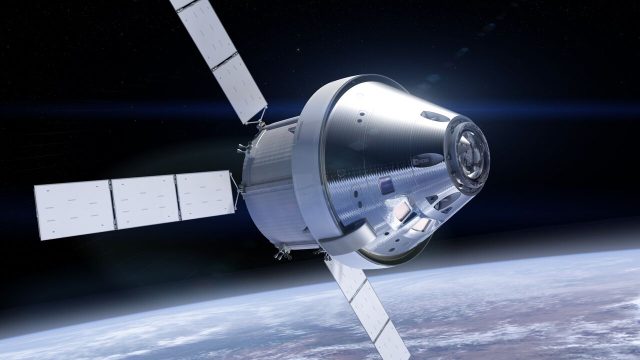
When presidential transition officials recently reviewed NASA's existing plans for using its Space Launch System rocket and Orion spacecraft, they were not particularly impressed with the agency's stretched-out timelines. Under NASA's current plan, an initial crewed launch of the new vehicles was unlikely to occur before 2021, and independent analyses pegged 2023 as a more realistic target. That would put the first crewed flight into deep space beyond the first term of President Trump.
In response to these concerns, top-level NASA managers have been considering the possibility of launching crew on the maiden flight of the Space Launch System, known as Exploration Mission-1 (EM-1), instead of making an uncrewed test flight of the rocket as presently planned. Although this would delay the initial launch of the SLS rocket from 2018 to at least 2019 or 2020, it would also add more sizzle by bringing crew to the mix.
With such a mission, astronauts would likely fly around the Moon as happened with the historic Apollo 8 flight in 1968. As one senior NASA manager recently explained to Ars, imagine the message NASA could send if, on the 50th anniversary of the Apollo landings in 1969, it was once again sending humans back into deep space with its new rocket and spacecraft. NASA would seem to be fulfilling its promise to America of getting back into the business of exploring deep space with humans.Now these secretive plans have spilled out into the open. On Wednesday, acting NASA Administrator Robert Lightfoot sent a memo to the agency workforce saying such an option would now be studied. "I have asked Bill Gerstenmaier to initiate a study to assess the feasibility of adding a crew to Exploration Mission-1, the first integrated flight of SLS and Orion," he wrote. "I know the challenges associated with such a proposition, like reviewing the technical feasibility, additional resources needed, and clearly the extra work would require a different launch date. That said, I also want to hear about the opportunities it could present to accelerate the effort of the first crewed flight and what it would take to accomplish that first step of pushing humans farther into space."
Big questions
Such an initiative comes with major questions for NASA. First of all, would risk evaluators sign off on launching astronauts on the massive SLS rocket without an uncrewed test flight in advance? (The agency has done so before, launching John Young and Robert Crippen on the first space shuttle mission without an uncrewed test flight). The second major question is whether the Orion spacecraft would be ready for such a mission. NASA engineers at Johnson Space Center have been designing the vehicle for an uncrewed EM-1, without some key life-support systems.
But one engineer at the Houston space center said it is likely that, with additional funding, Orion could be made ready. Some of the systems, such as carbon dioxide removal systems, might have to rely on a more rudimentary canister system rather than a final design, but the older technologies have been proven out in past missions. "If we started with EM-1 and added only what we needed, I don’t see why it wouldn’t work," the engineer told Ars.
The politics of all this remain murky, as well. The notion of a crewed EM-1 flight may be part of a plan by Lightfoot to increase the chance that the new administration continues funding support for development of the SLS rocket and Orion spacecraft. As Lightfoot is well aware, there are factions within the Trump administration urging the president to fully embrace the commercialization of the space agency, along with the promise of less expensive rockets and capsules being developed by the private space industry. A greater focus on commercial spaceflight might reduce funding—or eliminate it altogether—for the more expensive government vehicles.
For now, it will be up to Gerstenmaier, the head of NASA's human spaceflight operations, to study the question of timelines, cost, and crew safety. The survival of his cherished SLS and Orion programs may well depend on the extent to which he is willing to set some of his usual caution aside.
reader comments
161